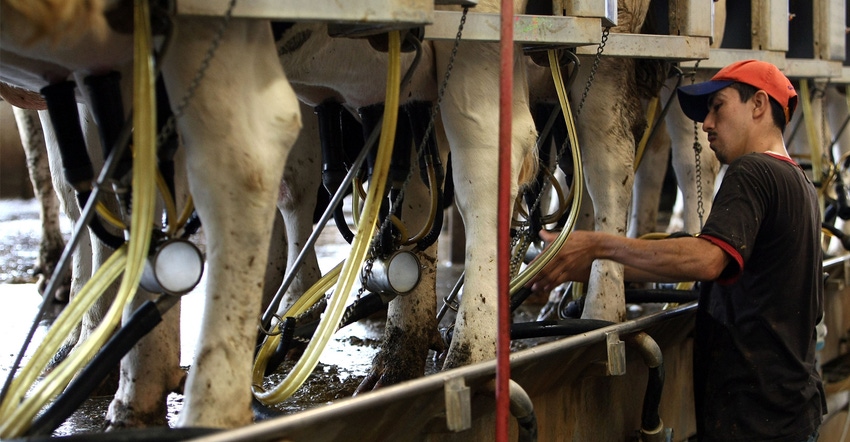June 4, 2021

Americans consumed on average 653 pounds of dairy products per person in 2019, according to the USDA Economic Research Service.
It’s good to know I’m above average, I guess? Everyone has an entire shelf for their cheeses in the fridge, right?
Americans like their cheese, butter, yogurt and ice cream. And with the innovation currently underway in the dairy industry for new food products and new ways to use dairy as a food ingredient, the U.S. dairy industry is poised to grow, according to the International Dairy Foods Association.
But we need a steady and reliable source of labor if it’s going to grow to meet the potential that’s there.
Workers needed
In 2014, the National Milk Producers Federation commissioned a survey from Texas AgriLife Research at Texas A&M University, “The Economic Impacts of Immigrant Labor on U.S. Dairy Farms.” It found that immigrant labor makes up 51% of all dairy labor, and dairies that employ immigrant labor produce 79% of the total U.S. milk supply.
The survey also found that if the U.S. dairy industry lost its foreign-born workforce, it would nearly double the retail milk price — and cost the total U.S. economy more than $32 billion and 208,208 jobs.
About 64% of those losses would occur in input supply sectors and services provided to U.S. dairy farms.
Imagine what the price of feed grains would do with fewer farms and fewer cows on the board.
The issue of labor and immigration reform came up while I was talking with American Farm Bureau President Zippy Duvall on his recent trip to Kansas. He says labor is the biggest limiting factor for American agriculture. He hears from members who want to bring the next generation back to the family farm and expand, but they can’t do so because there’s a limited labor supply.
The NMPF agrees, and says now is the time for real reform in farm labor.
Compromise
In an April 5 opinion editorial, NMPF CEO Jim Mulhern writes, “Farmers and their workforce have proven time and again in the past year that they can rise to substantial challenges. It’s time for Congress to do the same.” If the pandemic showed anything, it’s that most of the milk in this country comes from farms that employ immigrant labor, he continues. These workers, many of whom are undocumented, kept food production going during the pandemic, he writes.
“It’s time we bring them out of the shadows and give them the legal recognition that they deserve,” Mulhern writes.
A big first step happened in March when the U.S. House of Representatives passed the Farm Workforce Modernization Act, the only piece of ag labor legislation to pass that chamber in the past 35 years, according to NMPF. It doesn’t go nearly far enough, but at least it was passed, and with the help of 30 Republicans.
And yet without the support of the Farm Bureau, which said there were flaws in the bill that the organization hopes are ironed out as the U.S. Senate debates it.
Ok, it’s not a perfect bill, but it’s a start — and one we’ve waited 35 years to have. We all agree that fixing the broken ag labor system is critical to our competitiveness on the global stage, just not on how we accomplish that.
Mulhern has a good point. Throwing out a compromise legislation to hold out for a better deal does no one any good. No legislation is going to be perfect, but we need some movement on this issue.
It’s important for Kansas dairy farmers, and those communities that rely on them as economic boosters. It’s important for the growing dairy processing sector in our state.
And, it’s important for my little cheese habit.
The National Milk Producers Federation and the International Dairy Foods Association contributed to this opinion piece.
You May Also Like




